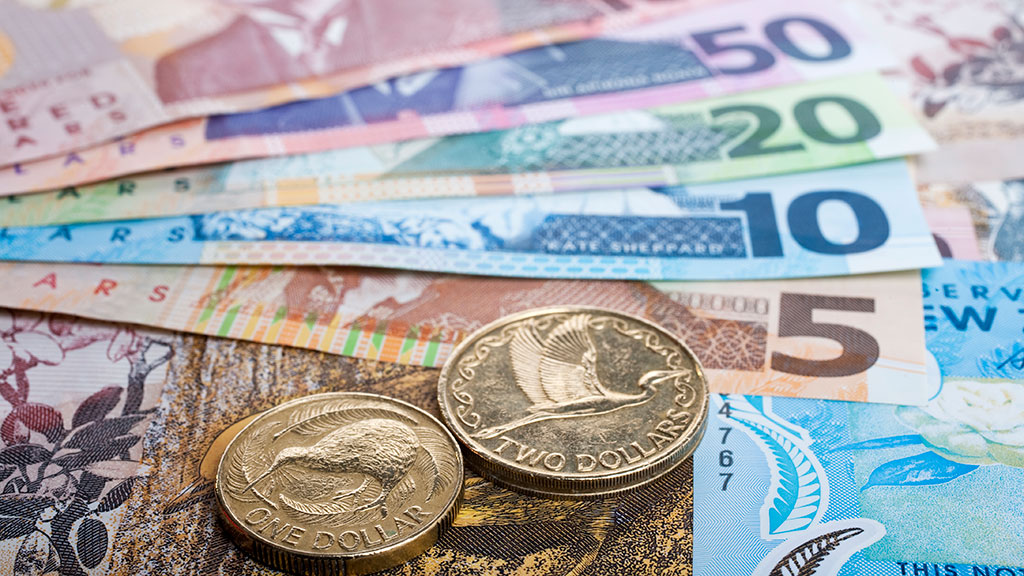Currency Corner: how is the New Zealand dollar doing against its US counterpart?
The New Zealand dollar has been doing well against the US dollar in recent months, but has started to wobble a little. Is it still a buy? Dominic Frisby finds out.


Today we check in on a foreign exchange trade idea we considered back in early December. The idea was to buy the New Zealand dollar (the “Kiwi”) against the US dollar. I highlighted the trade knowing pretty much nothing about the current fundamental reasons behind why the New Zealand dollar should appreciate. My reasoning was based around the simple trend-following strategy that I have devised.
By way of context, below I’ve taken a long-term chart of the pair, going back to 2003. When the chart is rising, the Kiwi is rising (and the US dollar is falling). And vice versa. The New Zealand dollar was at its strongest in 2011 and then again in 2014 at around US$0.88. It was at its weakest during the global financial crisis of 2008-2009 at just below US$0.50.
I also draw your attention (with the red curve) to an attractive “double bottom” pattern, which you can see stretching between 2015 and the summer of 2019 at US$0.62.
MoneyWeek
Subscribe to MoneyWeek today and get your first six magazine issues absolutely FREE

Sign up to Money Morning
Don't miss the latest investment and personal finances news, market analysis, plus money-saving tips with our free twice-daily newsletter
Don't miss the latest investment and personal finances news, market analysis, plus money-saving tips with our free twice-daily newsletter

Now let’s zoom in to a more recent weekly chart, with the six and 21 exponential weekly moving averages (EMA) – these are moving averages which put more weight on more recent readings – in red and blue respectively. The buy signal occurs when the red line crosses up through the blue line; when both lines are sloping up; and the price is above both lines. I’ve marked it in the chart below.

We got our buy signal at US$0.655 and there followed a nice rally to $0.675. Over the last three weeks however, the US dollar has strengthened, and some of that rally has been given back. As a result, we are now at $0.665 – about a cent in the green.
The outlook is wobbly – but the system is still saying “buy”
We are now at one of those slightly wobbly bits of trend-following, when it is tempting to take profits and jump ship. Over the last three weeks the price has definitely started to decline.
However, the system is the system and it must be followed if it is to work, and we currently remain on a buy signal. You could – if you want to manage your risk tightly – put a stop at just below the 21-week EMA (blue line) at, say, $0.648, but the risk is that this stop will get hit before the upward trend resumes. On the other hand, if the Kiwi were to collapse, at least you would be protected.
The other strategy might be, simply, to remain long until we get a sell signal. That would be the reverse of the buy signal – when the red line crosses down through the blue line and the price is below. We might, for example, be heading for a repeat of the price action we saw in late 2018, when there was a promising buy signal that didn’t work out. By April 2019 it had turned into a sell (and the long trade would have lost money). You would, however, have made the money back by following the sell signal. That’s the frustrating thing about trend-following. In ranging markets you can get “whipsawed” (thrown out by zig-zagging markets) and lose money. In trending markets however, it is the best way to maximise gains.
But this is all conjecture. We don’t know what is going to happen. Second-guessing yourself works sometimes, but it is not a system. The system is currently on a buy signal. So be long. And find some means to deal with the wobbles, if you have them.
The trade is a cent in the green. That’s good. My first target is the US$0.73 area, where there will be resistance. We might get there by early next year. In the longer term, we might even get back into the US$0.80s. That would mean President Donald Trump getting the weaker dollar he has been agitating for.
• Dominic’s new book Daylight Robbery: How Tax Shaped Our Past And Will Change Our Future, published by Penguin Business, is available at Amazon and all good bookshops. Audiobook at Audible.co.uk. Signed copies are available at dominicfrisby.com
Get the latest financial news, insights and expert analysis from our award-winning MoneyWeek team, to help you understand what really matters when it comes to your finances.
Dominic Frisby (“mercurially witty” – the Spectator) is as far as we know the world’s only financial writer and comedian. He is the author of the popular newsletter the Flying Frisby and is MoneyWeek’s main commentator on gold, commodities, currencies and cryptocurrencies. He has also taken several of his shows to the Edinburgh Festival Fringe.
His books are Daylight Robbery - How Tax Changed our Past and Will Shape our Future; Bitcoin: the Future of Money? and Life After the State - Why We Don't Need Government.
Dominic was educated at St Paul's School, Manchester University and the Webber-Douglas Academy Of Dramatic Art.
You can follow him on X @dominicfrisby
-
 Why Trustpilot is a stock to watch for e-commerce exposure
Why Trustpilot is a stock to watch for e-commerce exposureTrustpilot has built a defensible position in one of the most critical areas of the internet: the infrastructure of trust, says Jamie Ward
-
 Tetragon Financial: An investment trust with stellar returns
Tetragon Financial: An investment trust with stellar returnsTetragon Financial has performed very well, but it won't appeal to most investors – there are clear reasons for the huge discount, says Rupert Hargreaves
